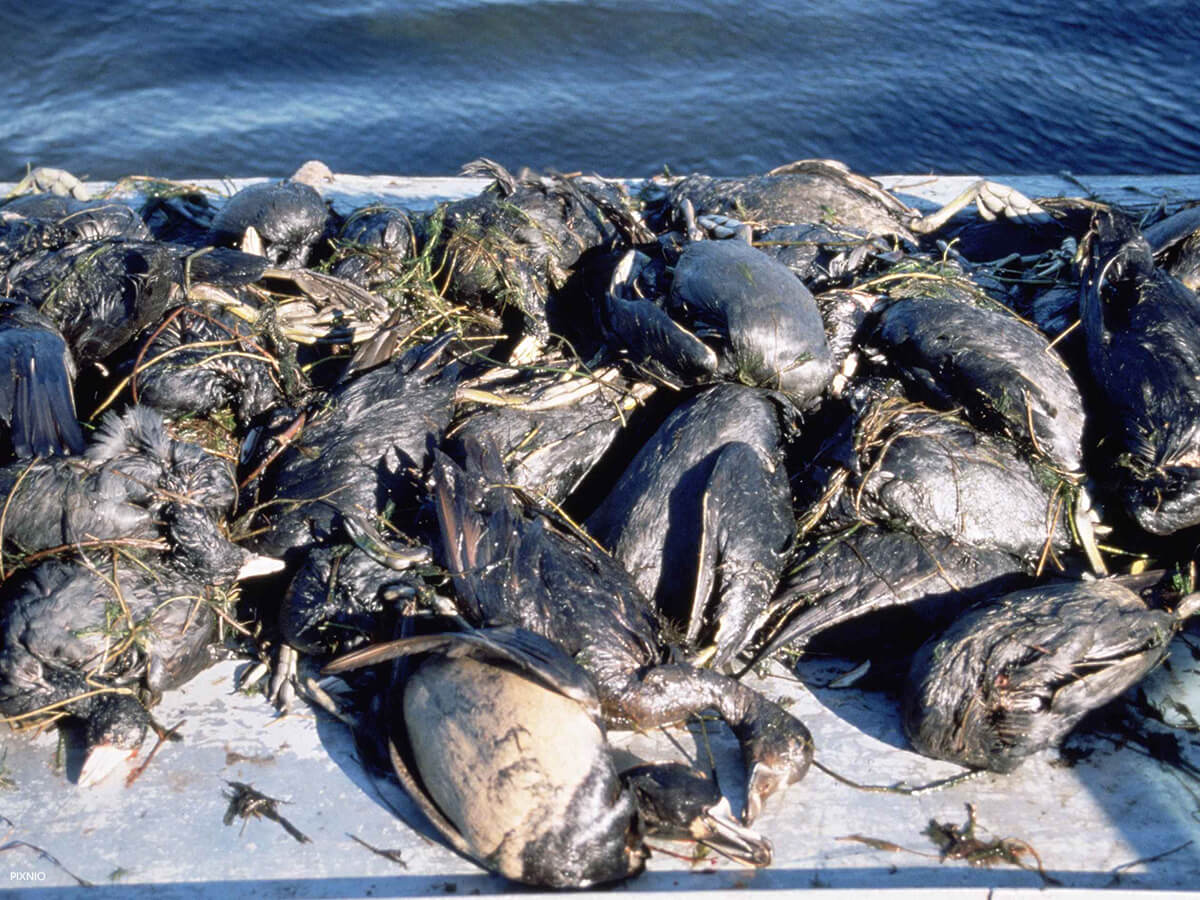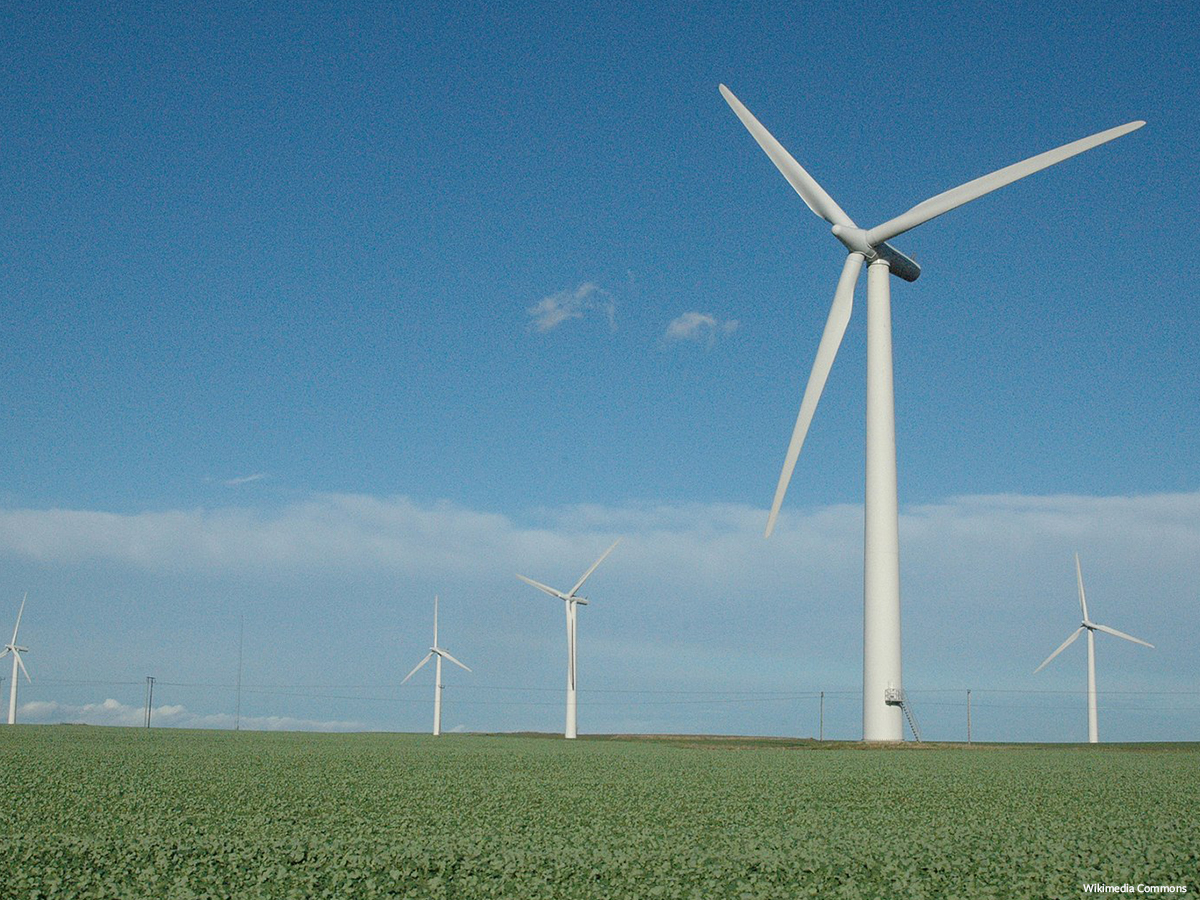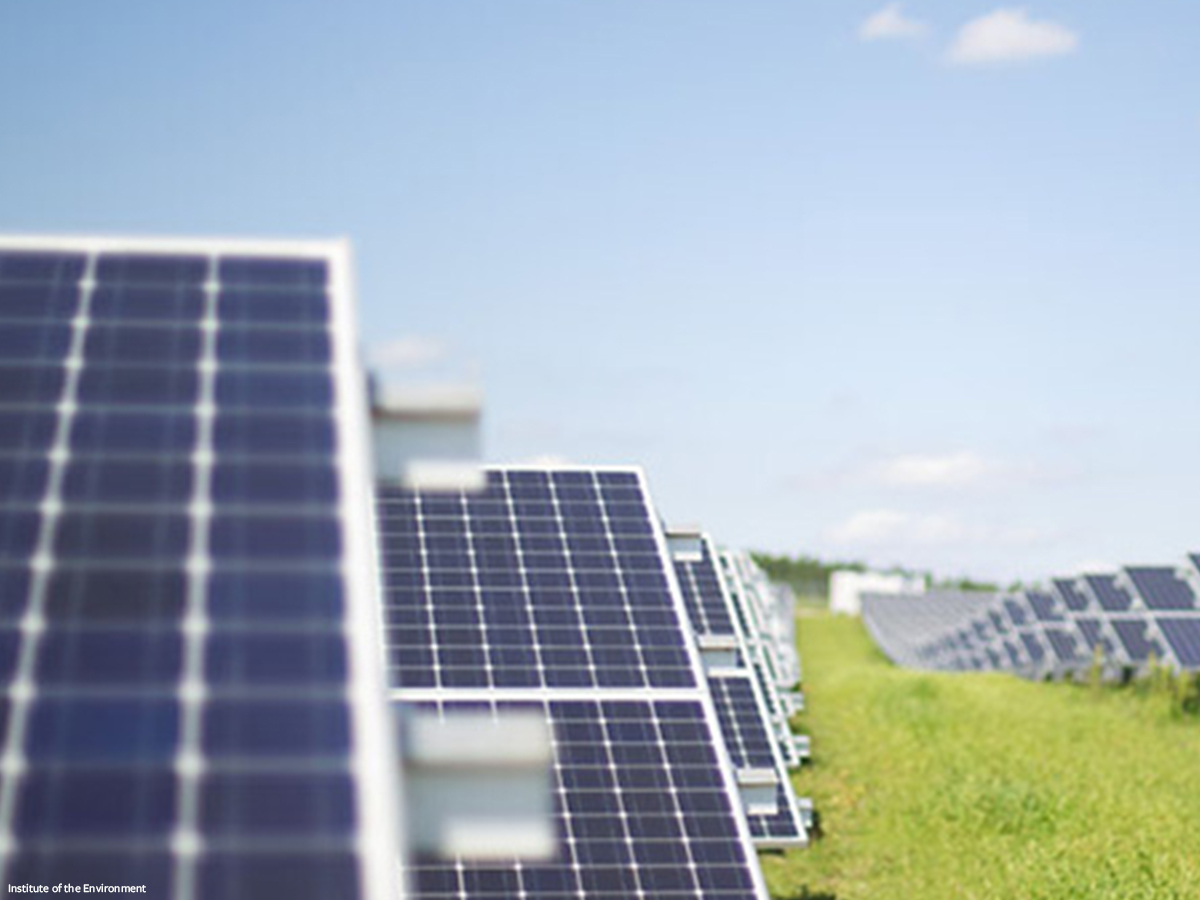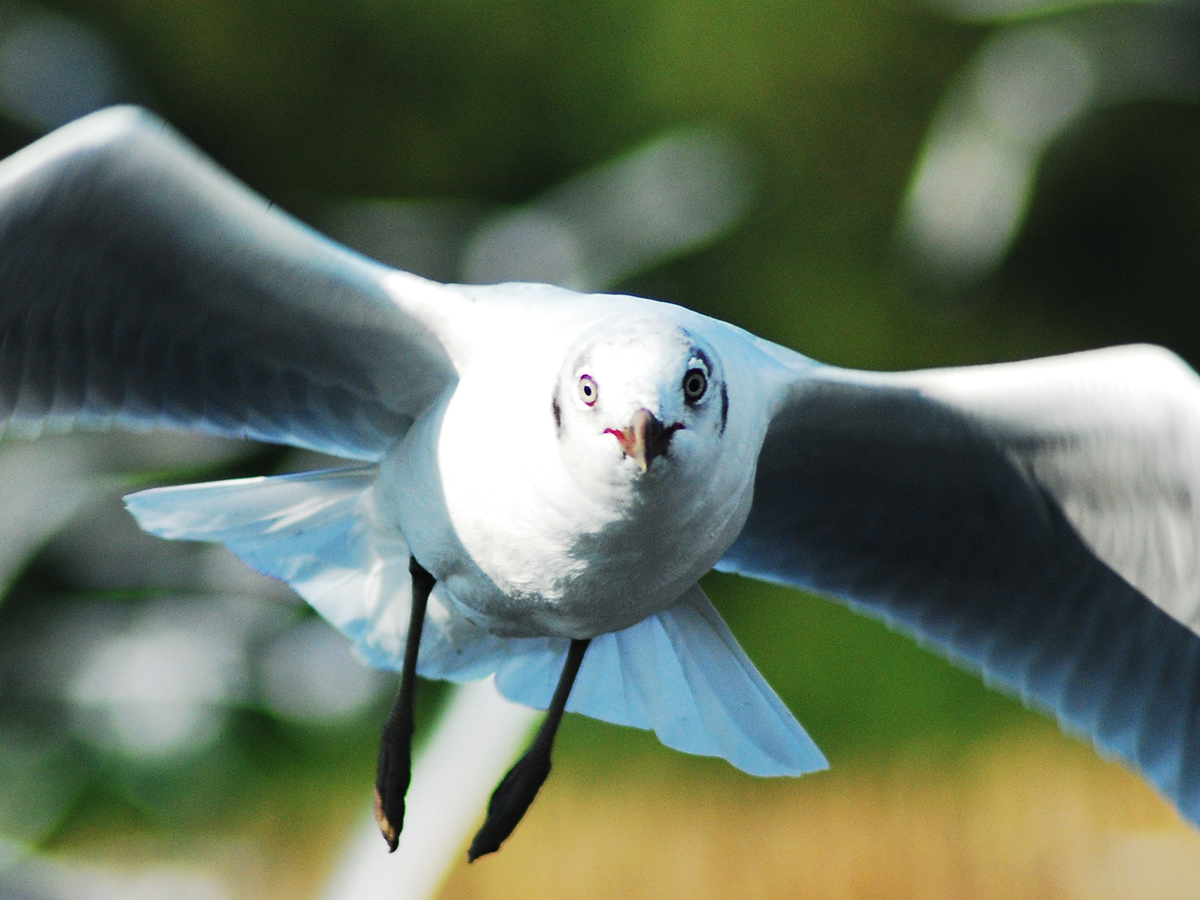We Know Fossil Fuels Are Bad for Animals, What About Wind and Solar?
In the year 1800 there were approximately 1 billion humans alive on planet Earth. Today, only a little over 200 years later, there are approximately 7.8 billion of us, and we’ve occupied the vast majority of Earth's dry land. Today very little true wilderness remains. Just as our population numbers have overwhelmingly increased over the past two centuries, our energy consumption has increased dramatically over that time as well. In fact, our energy consumption has increased far more significantly than our population numbers would imply, and this is especially true in “developed” regions like North America and Europe. Very little of this energy consumption can be labelled as “green.”

It is very difficult to be a wild animal today.
More or less all human activity results in animal suffering and death. This is true of energy production as well. But not all sources of energy are equally as destructive. Below we will outline which sources of energy cause the most, and the least destruction, and we will provide recommendations on how these technologies can proceed with the least harm, based on current industry best practices.
Fossil Fuels Are An Unmitigated Disaster
By far, fossil fuels, which include coal, oil and natural gas, are the worst possible sources of energy, except perhaps nuclear energy. Energy is generated from fossil fuels by burning them. When they burn, they release carbon pollution, which warms the atmosphere, causes increasingly violent weather events, contaminates water, and pollutes the air.
Scientists deem climate change to be one of the largest threats to wild animals on the planet, alongside habitat destruction and the illegal wildlife trade. Climate change may sound very abstract, but it is not. Almost half of U.S. birds could be lost this century as the current climate crisis shrinks and disfigures their ranges. Chief scientist, Gary Langham, at the Audubon Society, has called global warming "the greatest threat our birds face today."
In 2009, B.K. Sovacool estimated that 14.5 million birds die each year across the U.S. due to fossil fuel power plant operations in his paper "Contextualizing avian mortality: a preliminary appraisal of bird and bat fatalities from wind, fossil-fuel, and nuclear electricity," No clean source of energy, even if scaled up to the size of the current fossil fuel industry, would come anywhere near these numbers.
Accordingly, there is near universal agreement — including among the Audubon Society and the American Bird Conservancy — that clean sources of energy are vastly preferable to dirty sources of energy when it comes to protecting animals.
Green Energy, Though Far From Perfect, Is Vastly Preferable
In contrast to fossil fuel sources, green energy sources — including solar and wind energy — are clean. They produce electricity without releasing any carbon pollution or contributing to climate change. So, right off the bat, solar and wind energy are part of the solution to climate change, the greatest threat to birds today.
It is true that both wind turbines and solar facilities do currently kill birds. This is a tragedy and by no means should wind, solar power or other forms of green energy be embraced blindly. All means necessary must be taken to reduce these projects’ impacts on wildlife as much as possible, something we will cover below.
Still, in terms of both global efforts to reduce climate change, and local efforts to reduce bird and animal suffering and death, both wind and solar power are vastly preferable to traditional fossil fuels.

Wind: Better Studied, But Perhaps More Disruptive to Birds Than Solar
In terms of bird fatalities, there is no comparison between wind or fossil fuel generated power. In the Sovacool study cited above, it was found that wind farms are responsible for 0.3 bird deaths per gigawatt-hour (GWh) of electricity, whereas fossil-fuel power stations are responsible for 5.2 fatalities per GWh. According to those numbers, fossil-fuel power stations are 17 times more lethal than wind farms. At those rates, if we replaced fossil fuels with wind energy, we could potentially prevent millions of bird deaths.
To stress, there are real concerns around wind power. From collision deaths to habitat degradation, wind farms do displace and kill birds. Offshore wind farms come with their own issues, including noise associated with the construction process, and the presence of the installations disturbing the behavior of marine animals.
Still, scientists are exploring ways to reduce the collateral damage of wind farms, and are making progress. Additionally, offshore wind farms have as many benefits as they have drawbacks. Fishing is generally not permitted near the platforms, and there is even evidence the wind installations may function as artificial reefs which help restore damaged ecosystems.
Just as importantly, however, wind farms can be dismantled and replaced with even more “gentle” technologies down the road, whereas the pollution and climate change brought about by fossil fuels will remain in the atmosphere for centuries, possibly millenia.

Solar: Less Understood, But The Preliminary Data is Promising
Unlike with wind power, a figure for fatalities per GWh of electricity is not available for solar, so we cannot do a side by side comparison. That said, a 2016 first-of-its-kind preliminary assessment by Leroy J.Walston Jr. et al. estimated utility-scale solar farms around the U.S. kill less than one-tenth of 1% of the estimated number of bird deaths by fossil-fuel power plants. Even factoring in the fact that solar panels only account for 2.7% as much energy production as fossil fuel generation currently, assuming solar is to be scaled up to produce as much energy as fossil fuels, bird deaths from solar plants would still only amount to less than 4% of those at fossil fuel plants.
The data is still very preliminary, and we should plan for the worst, but as noted above, there is near universal agreement — including among the Audubon Society and the American Bird Conservancy — that clean sources of energy, including solar, are vastly preferable to dirty sources of energy when it comes to protecting animals.
It is true that bird deaths at solar plants can be gruesome, and accordingly make headlines. The “lake effect,” in which water birds can mistake a large reflective solar facility for a body of water, and die after colliding into them (this effect has not been observed on small, distributed solar panels), is a real problem. As is solar flux-related mortality, in which birds are incinerated upon exposure to concentrated sunlight (this only happens at thermal solar plants, also known as concentrating solar plants, which are far less common than photovoltaic (PV) solar plants and panels).
Again, however, there are steps that can be, and already are being, taken to reduce bird morality. And again, just as with wind farms, solar plants can be dismantled and replaced with even more “gentle” technologies down the road, whereas the pollution and climate change brought about by fossil fuels will remain in the atmosphere for centuries, possibly millenia.
Recommendations For Further Reducing the Impact of Clean Energy on Animals
The following are recommendations that apply to both wind and solar plants:
- Selecting a proper site is crucial, perhaps the single most important factor. The first step must be to build in low impact areas away from migratory routes, breeding grounds or wetlands, and populations of rare or endangered species.
- Perhaps the best location placement of all is installing solar panels on homes. These do not harm birds at all, and in fact birds often nest in the protected space between the panel and the roof.
- Clearing vegetation around solar towers and wind turbines to make the area less attractive to birds, and restoring an equal or greater amount of bird habitat elsewhere to draw birds away from these facilities.
- The implementation of mandatory, rather than voluntary guidelines, for all energy sources.
- Strong enforcement of existing laws that protect wildlife, including the Endangered Species Act, the Bald and Golden Eagle Protection Act, and the Migratory Bird Treaty Act.
- Independent assessment of risks pre-construction and monitoring of bird deaths post-construction to remove any potential conflict of interest.
Wind Turbine Specific Recommendations
- A combination of camera technology, human surveillance, and real-time tracking maps can be used to identify incoming flocks of birds, at which time turbines can be shut down at key moments.
- Painting turbine blades different colors.
- Tubular towers should be used instead of lattice towers, where birds can perch.
- “Shrouded” turbines may decrease bird fatalities, though more research is required.
Offshore Wind Power Recommendations
- As this is a relatively new technology, additional research should be conducted and we should not proceed too hastily
- Construction should be avoided during times of the year when whales, dolphins and migratory fish are present
- Noise-reducing technologies such as bubble curtains should be used during construction
- Quiet foundations, such as gravity-based or suction caisson platforms, may be preferable to foundations that require pile driving
- Boat traffic to traffic to the turbines should be kept to a minimum. 10 knot speed limits should be enforced, and crews should spend multiple days on site instead of ferrying back and forth to the shore each night.
Solar Farm Specific Recommendations
- Panels and mirrors should be built, or retrofitted, with designs that help birds and insects realize the solar arrays are not water.
Potentially Problematic Solutions For Which Pros and Cons Must be Weighed Specific to Each Site
- Acoustic devices can be mounted that deter birds and bats.
- Illumination can be used, although this may also disorient birds.
- Spiked surfaces can make perching nearby undesirable.
Our Position
The main threat to wild birds is the enormous increase in the human population over the past few centuries. If we really desire to reduce our impact on wild animals, we need to reduce our numbers by lowering the human birth rate dramatically as well as lessen our total energy and resource consumption.

That said, in the near-term, we stand in agreement with the Audubon Society and the American Bird Conservancy that alternative energy in the form of wind and solar power make for vastly preferable options to fossil fuel based sources of energy. As is widely recognized, alongside habitat loss and the illegal wildlife trade, climate change ranks as one of the greatest threats to wildlife today.
To stress again, however, “clean” energies are not yet perfectly “innocent.” Laws and guidelines must be enforced, and labor and funds must be devoted to reducing the destructive impact of solar and wind technologies on birds and their habitats. And as soon as less harmful new technologies are developed, we should adopt them and leave behind the current generation of wind turbines and solar farms.
In the meantime, one big thing we can do to protect animals and mitigate the impact of climate change is lowering the human birth rate by choosing to adopt over birthing our own children and by switching to a plant-based diet.

